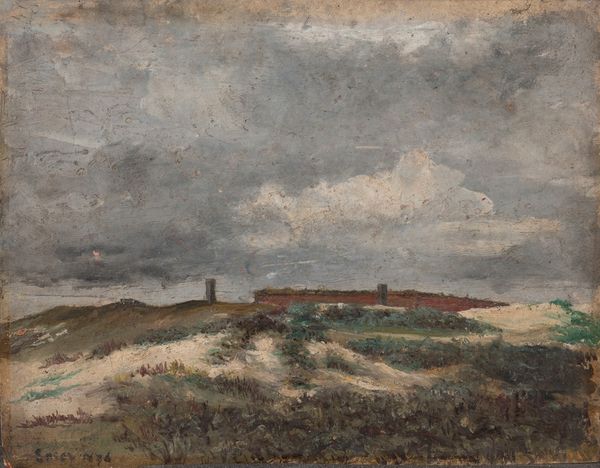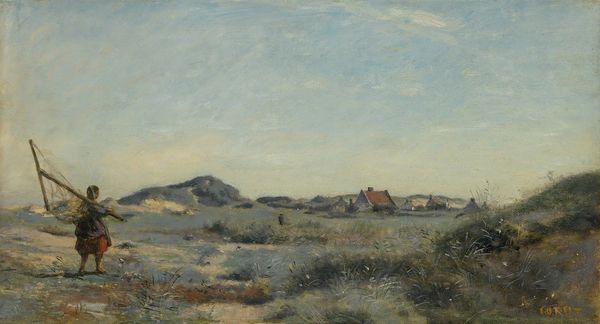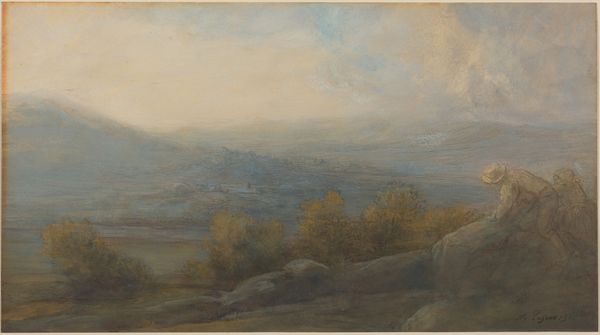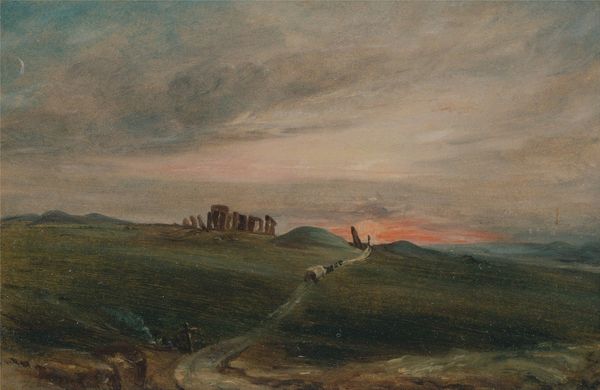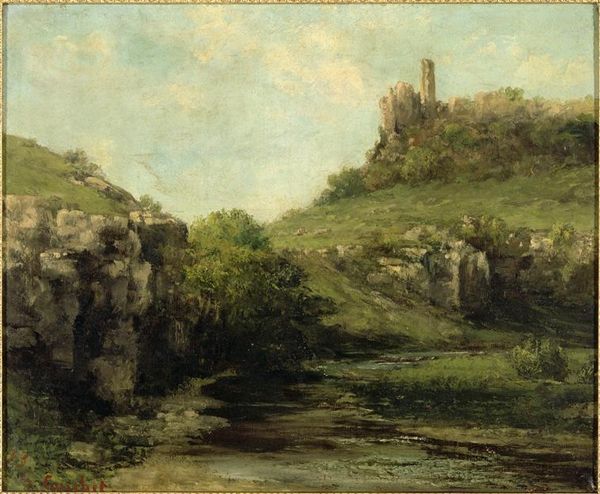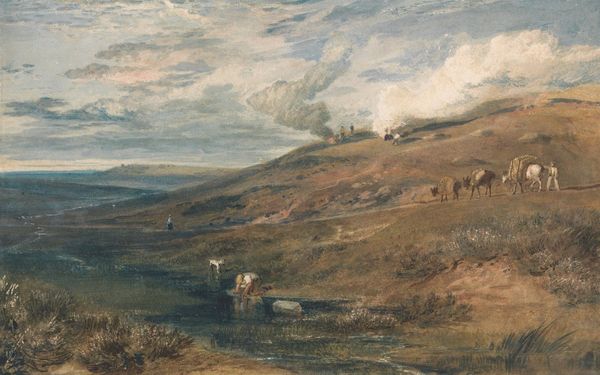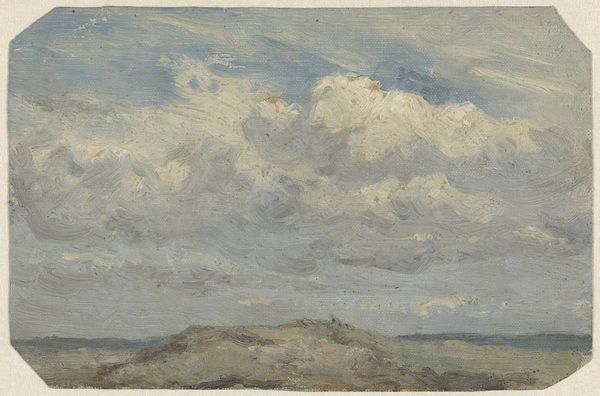
plein-air, oil-paint
#
impressionism
#
plein-air
#
oil-paint
#
landscape
#
charcoal drawing
#
oil painting
#
watercolor
Copyright: Public Domain: Artvee
Editor: So, this is James Ensor’s "Dunes," painted in 1877 using oil paints, capturing a windswept landscape. The muted colors create such a pensive mood. How do you interpret the emotional tone of this painting? Curator: Notice how the high horizon line presses down, creating a sense of enclosure? Consider that the dune, as a symbol, represents a boundary, a threshold between land and sea. Does this suggest something about Ensor's own emotional landscape at the time? Editor: That’s interesting, a threshold… I hadn't considered that. I was mainly focused on the overcast sky making everything feel rather somber. Curator: The sky is undoubtedly a key player. Think of clouds in art: they’re frequently symbolic of transition, the ephemeral nature of existence. Given Ensor's later explorations of masks and societal critique, does this early work suggest a nascent awareness of hidden realities, of things obscured? Editor: So you are seeing those cloudy skies, not just literally, but as a cultural symbol? What did you mean about masked realities and hidden things? Curator: Quite possibly! The symbol resonates with what we know of this artist's biography and concerns. Consider also how the brushstrokes themselves feel tentative, searching. Could this visual language also reflect a young artist trying to find his place, to express a deeper truth? Editor: It almost feels like the landscape is a character in itself, full of those internal conflicts and uncertainties. Curator: Exactly. This interplay of visible forms and concealed meanings provides a deeper emotional resonance and perhaps a narrative element as well, of an artist finding his way in the world. Editor: It definitely gives me a lot more to think about! Seeing it through the lens of cultural symbols, helps me dig below just what my eyes are perceiving.
Comments
No comments
Be the first to comment and join the conversation on the ultimate creative platform.

